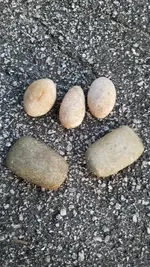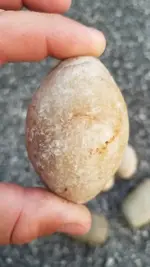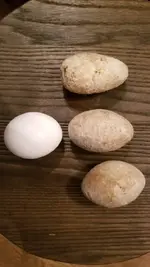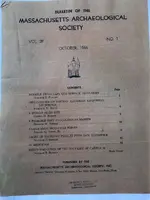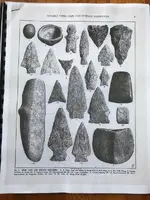I think that some of these stones that are found on known prehistoric sites, where they would not have come to rest via geologic means, could be under-recognized cooking stones. If pre-historic peoples heated stones in a fire and placed them into leather, wood, shell or ceramic type vessels to heat soups or liquid type foods, then we should be able to find them, or the remains of them on prehistoric sites. I suspect that finding a suitable stone that could be used in such a manner repeatedly, without fracturing in the soup and leaving sand and debris, would be a treasured item in many locales. Most of the "fire cracked rock" we find on our local sites are a form of quartzite, rather than chert. Exceptionally smoothed stones like these probably have less stress raisers, and could probably withstand repeated re-immersions better than angular shaped stones. I don't think the prehistoric peoples would have lined their campfires with stones like the boy scouts were trained to do, so there must be a practical reason why sites contain fire cracked rocks? I have a few similar stones I have found and kept, and some of them are covered with small shallow semi circular marks, which look to me as they may be the equivalent of the tiny fractures you can get in glass when you heat it and immerse it in water, and I suspect heating liquids with them was the cause. Just something to consider.
